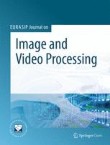Efficient Adaptive Combination of Histograms for Real-Time Tracking
We quantitatively compare two template-based tracking algorithms, Hager's method and the hyperplane tracker, and three histogram-based methods, the mean-shift tracker, two trust-region trackers, and the CONDEN...
